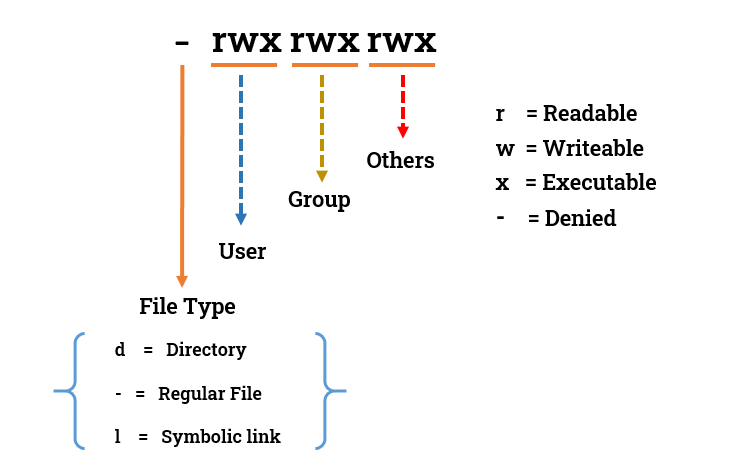File System Permission & Hands on Basic Linux Commands
Table of contents
- File System Permission:-
- Task: What is the Linux command to:-
- 1. To view what's written in a file.
- 2. To change the access permissions of files.
- 3. To check which commands you have run till now.
- 4. To remove a directory/ Folder.
- 5. To create a fruits.txt file and to view the content.
- 6. Add content in devops.txt (One in each line) - Apple, Mango, Banana, Cherry, Kiwi, Orange, Guava.
- 7. To Show only top three fruits from the file.
- 8. To Show only bottom three fruits from the file.
- 9. To create another file Colors.txt and to view the content.
- 10. Add content in Colors.txt (One in each line) - Red, Pink, White, Black, Blue, Orange, Purple, Grey.
- 11. To find the difference between fruits.txt and Colors.txt file.
- 12. Check your present working directory.
- 13. List all the files or directories including hidden files.
- 14. Create a nested directory A/B/C/D/E

Hello there! Today, we'll embark on a colorful journey to explore some simple but powerful tasks you can do with files and commands on your computer. Don't worry if you're not an IT expert – we'll make everything easy and fun! 😄

File System Permission:-

chmod - Command is used to change the permission of file & directory.

take an example:- here,
A) chmod 750 newfile.txt
here,
7 represents: user has permission for (Read, Write, Execute )
5 represents: group has permission for (Read, Execute )
0 represents: other has no permission.
B) chmod 642 newfile.txt
6 represents: user has permission for (Read, Write )
4 represents: group has permission for (Read )
2 represents: other have permission for (Write ).
Task: What is the Linux command to:-
1. To view what's written in a file.
cat - This command is used to view all the contents written in a file.

2. To change the access permissions of files.
chmod - This command is used to change the permissions of a file/directory.

3. To check which commands you have run till now.
history - This command is used to see all previously executed commands.

4. To remove a directory/ Folder.
'rm' and 'rm -r' - these commands are used to remove a file and directory respectively

5. To create a fruits.txt file and to view the content.
touch - This command is used to create empty files.
cat - This command is used to read the content of the created files.


6. Add content in devops.txt (One in each line) - Apple, Mango, Banana, Cherry, Kiwi, Orange, Guava.
vi or vim - This is used to create the files and edit the files.
i - to insert something in file
w - to save all the changes.
q - to quit the file without saving changes.
wq-save and quit


7. To Show only top three fruits from the file.
head -n filename: This command is used to view the content from the top.

8. To Show only bottom three fruits from the file.
tail -n filename: This command is used to view the content from the bottom.

9. To create another file Colors.txt and to view the content.
touch - This command is used to create empty files.
cat - This command is used to read the content of the created files.


10. Add content in Colors.txt (One in each line) - Red, Pink, White, Black, Blue, Orange, Purple, Grey.
vi or vim - This is used to create the files and edit the files.

11. To find the difference between fruits.txt and Colors.txt file.
diff - This command is used to display the differences in the files by comparing the files line by line.

12. Check your present working directory.
pwd - This command is used to see the present working directory

13. List all the files or directories including hidden files.
ls : to see list of all the files
ls -a: to see list of all the files including hidden files too


14. Create a nested directory A/B/C/D/E
mkdir -p: This command is used to create a nested directory

Congratulations, brave explorer! 🎉🌈 Remember, with great power comes great responsibility – handle files and commands with care! 🧙♂️💻 May your Linux adventures be filled with enchantment and joy! Happy computing! 🌟🌌
